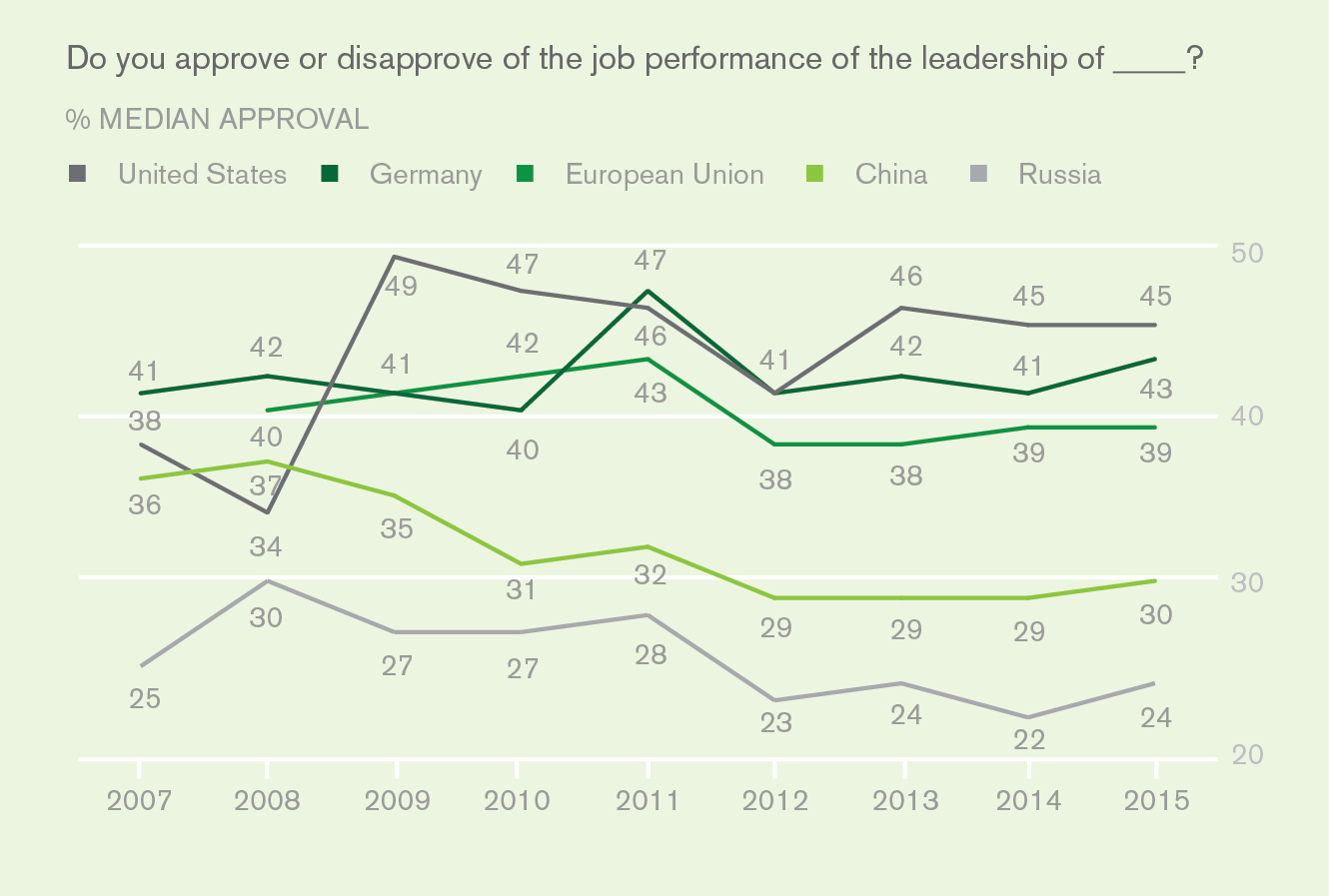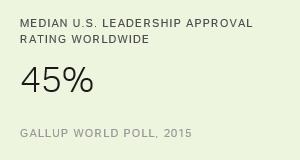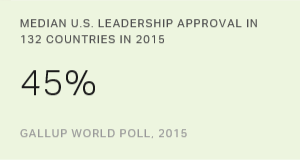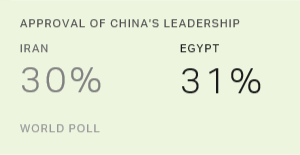Story Highlights
- U.S. approval rating stable at a median of 45%
- Median approval of EU leadership is 39%
- Russia continues to get lowest approval rating worldwide at 24%
WASHINGTON, D.C. -- Since President Barack Obama took office in 2009, the image of the U.S. has been relatively strong worldwide. Approval ratings of U.S. leadership have not yet returned to the high levels observed when he first took office (49%), but in most years, they have been higher than the ratings for other major global powers -- several of whom have had similar continuity in their leadership.

The same is true as Obama prepares to leave office. For the third consecutive year, the leadership of the U.S. earns the highest approval ratings among five major global powers. Median approval of U.S. leadership across 132 countries and areas in 2015 is 45% -- unchanged from 2014. The U.S. narrowly tops Germany, which has a median approval rating of 43%. The EU follows closely behind with a rating of 39%.
A sizable gap remains between ratings of the U.S., Germany and the EU and ratings of the leadership of China and Russia. Median approval of China's leadership has been stable since 2012 and currently stands at 30%. Russia's leadership continued to have higher visibility in 2015 than in the past several years, but approval ratings remain low at 24%.
Despite the generally high approval ratings for the U.S., there is still room for improvement. Nearly three in 10 (28%) now disapprove of U.S. leadership -- the highest disapproval in Obama's presidency so far. In fact, in 2015 the U.S. received its lowest approval ratings of any country in the history of Gallup's tracking from Russia, where only 1% of people approve of U.S. leadership.
These findings and others are available in a new Gallup report, Rating World Leaders: 2016, which shows where the images of the leadership of the U.S. and other world powers are strongest and weakest today.
Watch Jon Clifton, managing partner at Gallup, discuss these findings at a Washington D.C. summit.
Survey Methods
Results are based on face-to-face and telephone interviews with approximately 1,000 adults, aged 15 and older, in each country or area. Throughout 2015, residents were asked to rate U.S., German and Russian leadership in 132 countries or areas, and residents in 133 countries or areas were asked to rate the EU and China. For results based on the total samples, the margin of sampling error ranges from ±2.5 percentage points to ±5.2 percentage points at the 95% confidence level. The margin of error reflects the influence of data weighting. In addition to sampling error, question wording and practical difficulties in conducting surveys can introduce error or bias into the findings of public opinion polls.



